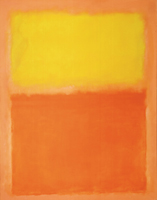| Introduction |
 |
 This edition of the newsletter is a fine example of the many ways in which ARAS Online embodies ARAS as a living history of images and their evolving meaning. Harry Prochaska, a long time curator of San Francisco ARAS, shows how the image of the divine child has expressed itself in different cultures and in different eras. His lead article, an excerpt from his book, Amplification of Symbols, demonstrates how the method of amplification can bring to life the primordial image and its essential meanings. Now deceased, Harry spent many years as a devoted scholar of ARAS and the newsletter will be featuring chapters from his unpublished book over the next several issues. The ARAS Hint section of the newsletter discusses the "alternative commentary" feature of the Online archive. Not only do images and their meanings change over time, but the commentaries of ARAS itself have transformed over time. In many cases, the commentaries have become richer on their second or third incarnation, but we wanted the user of the archive to be able to track the evolution of ARAS scholarship itself by having access to earlier commentaries. Just as an archetypal image itself may change over time, so too our understanding of that development may also evolve. And, finally, the continuing fascination with images and our understanding of them spawns even further exploration in the spirit of ARAS--as in the upcoming Art/Psyche Conference that Ami Ronnberg, Curator of National ARAS, announces in this newsletter. This is not an ARAS-sponsored event, but it certainly is in the tradition of ARAS and its original Eranos conferences in which images and their meanings were given deep consideration. This edition of the newsletter is a fine example of the many ways in which ARAS Online embodies ARAS as a living history of images and their evolving meaning. Harry Prochaska, a long time curator of San Francisco ARAS, shows how the image of the divine child has expressed itself in different cultures and in different eras. His lead article, an excerpt from his book, Amplification of Symbols, demonstrates how the method of amplification can bring to life the primordial image and its essential meanings. Now deceased, Harry spent many years as a devoted scholar of ARAS and the newsletter will be featuring chapters from his unpublished book over the next several issues. The ARAS Hint section of the newsletter discusses the "alternative commentary" feature of the Online archive. Not only do images and their meanings change over time, but the commentaries of ARAS itself have transformed over time. In many cases, the commentaries have become richer on their second or third incarnation, but we wanted the user of the archive to be able to track the evolution of ARAS scholarship itself by having access to earlier commentaries. Just as an archetypal image itself may change over time, so too our understanding of that development may also evolve. And, finally, the continuing fascination with images and our understanding of them spawns even further exploration in the spirit of ARAS--as in the upcoming Art/Psyche Conference that Ami Ronnberg, Curator of National ARAS, announces in this newsletter. This is not an ARAS-sponsored event, but it certainly is in the tradition of ARAS and its original Eranos conferences in which images and their meanings were given deep consideration.
Tom Singer, M.D.
Co-Chair of the ARAS Online Committee |
ARAS in New York City |
 |
The archive in New York City fills many file cabinets!
 |
Send Us Your Questions |
 |
| If you have questions about specific images, searching, how to use ARAS, or archetypal symbolism in general, please email them to us at info@aras.org. |
|
 |
| Images of the Divine Child |
 |
From Amplification of Symbols by Harry Prochaska
Mythologies are stories of the birth and childhood of gods, of the exploits and encounters with each other and their excursions in the human world. Even when these stories center around a single god or goddess, they do not comprise a biography; they are not chronological narrative. Instead they relate a manifestation of a god and his interactions with other beings of the cosmos. Carl Kerényi writes: "The gods are so 'original' that a new world is always born with a new god -- a new epoch or a new aspect of the world. They are 'there,' not only in the beginning when they themselves originated, and not only in the periodic repetitions of that first origination, i.e., cosmic reappearances and representations on festal occasions. Though they are present all the time, the mythologems which unfold in narrative form what is contained in the figures of the gods are always set in a primordial time. This return to the origins and to primordiality is a basic feature of every mythology."
A particular aspect of this "primordiality" becomes concentrated in the appearance of the god as divine child and since this is a psychic genesis, everything must happen non-empirically, e.g. by a virgin birth, a miraculous conception or birth from unnatural organs. "The motives of 'insignificance,' exposure, abandonment, danger, etc., try to show how precarious is the possibility of psychic wholeness, that is, the enormous difficulty to be met with in attaining this 'highest good.'" These stories show the god in the "full perfection of his power and outward form."
The stories of the birth of Hermes and his exploits as a child serve as fine examples of the essence of the god (or a particular power) at his beginning to be retold many times over in many other situations. Maia and Zeus conceived Hermes, in the deepest night when heavy sleep had overtaken Hera protecting them from her jealousy. Hermes was born at dawn, and by evening had stolen the herd of cattle which belonged to his brother, Apollo.
Click here to see images and the rest of this article |
 
Art and Psyche Conference |
 |
By Ami Ronnberg, Managing Editor and Curator - ARAS New York
 It is a pleasure to announce the first international conference on Jung and the visual arts called ART AND PSYCHE: REFLECTIONS ON IMAGE organized by the Art and Psyche Group and hosted by the C.G. Jung Institute of San Francisco. The focus on the image mirrors ARAS' tradition of approaching art from a psychological and archetypal perspective, across disciplines and cultures. The enthusiastic response to our invitation for proposals made it clear that there is a great interest in this meeting place between the arts and a Jungian perspective. A wealth of proposals arrived from all continents and it was both moving and exhilarating to review the range of creative ideas presented. We decided to be as inclusive as possible, resulting in this extraordinary offering. It includes artists, art historians, critics, curators, Jungian analysts and analysts of other schools - all inspired by the image. It is a pleasure to announce the first international conference on Jung and the visual arts called ART AND PSYCHE: REFLECTIONS ON IMAGE organized by the Art and Psyche Group and hosted by the C.G. Jung Institute of San Francisco. The focus on the image mirrors ARAS' tradition of approaching art from a psychological and archetypal perspective, across disciplines and cultures. The enthusiastic response to our invitation for proposals made it clear that there is a great interest in this meeting place between the arts and a Jungian perspective. A wealth of proposals arrived from all continents and it was both moving and exhilarating to review the range of creative ideas presented. We decided to be as inclusive as possible, resulting in this extraordinary offering. It includes artists, art historians, critics, curators, Jungian analysts and analysts of other schools - all inspired by the image.
If you are interested in attending, please see more information. |
ARAS Hint: Alternate Commentaries |
 |
|
When you explore ARAS Online, you may encounter records that say Alternate Commentaries near the bottom of their descriptions. The links there take you to other, generally older, commentaries different ARAS researchers wrote over the years to describe the same image. If you're studying a particular image in depth, you may find the alternate commentaries provide other perspectives and information and are well worth reading.
Alternate commentaries often arose when we reworked an earlier commentary for publication in a book or elsewhere. For example, record 2Co.002 has two alternates. You normally see the "Main" commentary, which is from the second volume of ARAS' Encyclopedia of Symbols – The Body. The alternate commentaries were written earlier - one was even handwritten!
Record 2Bt.600 has three alternates. The "Main" commentary is the most complete, alternate 1 was a shorter format we once used, alternate 2 is an earlier formal commentary, and alternate 3 is a handwritten note one researcher left.
When we put the entire ARAS archive online, we didn't want to lose any of the archive's past 70-plus years of scholarship. That's why you'll find all these alternate commentaries preserved for you to use.
|
|

